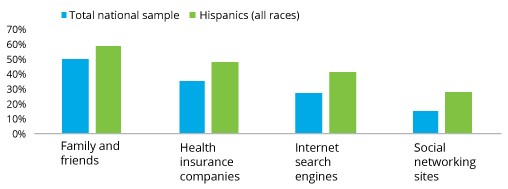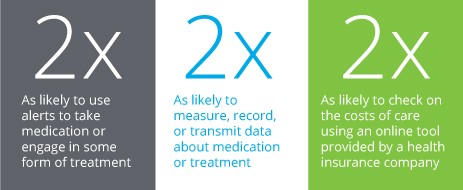[Note: I’m republishing a few Deloitte blogs that they are no longer hosting as part of the new website.]
Published Date : October 18, 2018
Author: Deloitte
Categories : Biopharma, Drug rebates, Life sciences, Regulatory
Nearly half of all Americans (49 percent) have at least one prescription drug, and 12 percent of the population has five or more, according to 2017 data from the Centers for Drug Control and Prevention (CDC). In 2016, $329 billion was spent on prescription drugs—an increase of nearly 30 percent from 2010.1
With so much money at stake, drug pricing has become a front-page issue. But the sale of pharmaceuticals is based on a complex economic model that few people fully understand. It involves employers, health plans, pharmaceutical benefit managers (PBMs), pharmaceutical manufacturers, wholesalers, pharmacies, and the government.
As the administration looks for ways to reduce prescription drug prices, prescription drug rebates is one area that has come under scrutiny. Health and Human Services (HHS) Secretary Alex Azar recently said it was within his agency’s power to eliminate rebates on prescription drugs. A proposed rule from HHS, which could end or significantly alter rebates, is being reviewed at the Office of Management and Budget. This regulation could affect commercial health coverage and Medicare Part D, but might begin with an initial focus on Medicare.
How drug rebates work
Pharmaceutical manufacturers establish a list price for their products with an understanding that discounts and rebates will be used to reduce the list price employers or government programs actually pay. A clinical drug evaluation conducted by a PBM’s Pharmacy and Therapeutics (P&T) committee identifies which drugs have to be covered and which drugs are optional. Health plans and PBMs then consider rebates as they design their formulary (i.e., the preferred drug list used by health plans). This discussion considers the breadth of the formulary (i.e., number of drugs per therapeutic category), whether the formulary is open or closed, and the number of formulary tiers. Rebates typically increase as a formulary becomes more narrow (or closed) because it increases the likelihood that certain drugs will be prescribed.
In 2017, rebates and discounts offered by brand-name drug manufacturers reduced list prices by an average of 44 percent.2 Several PBMs have said they keep 5 percent or less of the rebates, which means the vast majority of rebate dollars are transferred to health plans, self-insured employers, and Part D plans to help reduce premiums. While some PBMs say they send 100 percent of rebate revenue to clients, they do charge plan sponsors administrative fees. PBMs also collect administrative fees from pharmaceutical manufacturers for managing the rebates. What is less clear is how consumers benefit from rebates. For example, do rebates translate to lower health insurance premiums for everyone versus directly benefiting only the patients who use the medications?
The administration views rebates as one lever that could have an impact on drug prices. At the heart of this debate is whether drug prices are artificially high because of the rebate system, or whether this system helps to bring drug prices down.
Antitrust litigation prompted drug-rebate model
Drug rebates became popular among PBMs after the antitrust litigation of the 1990s challenged the ability of drug manufacturers to offer up-front discounts. The courts determined such discounts ran afoul of antitrust law by favoring managed care providers over pharmacies. In response, drug manufacturers turned to rebates, which the courts indicated would be preferable.
Under current law, rebates are permissible because the anti-kickback statue—and implementing regulations—has a discount exception (also known as the safe harbor). The administration’s “blueprint” to reduce drug prices includes the removal of this safe-harbor protection of manufacturer rebates. The intent is to decrease out-of-pocket costs for consumers and reduce overall drug spending.
Over the past five years, the amount of rebates and discounts offered by pharmaceutical manufacturers has doubled to $153 billion in 2017, according to life sciences analytics firm IQVIA. This trend aligns with a growing number of high-cost specialty drugs and more aggressive cost-management tactics—such as closed formularies—among plan sponsors. Until the administration began focusing on drug costs, the gross-to-net bubble (i.e., the difference between the list price and the actual price paid after rebates) had shown no signs of decreasing.
The IQVIA data also indicates that while list drug prices have increased, net prices have remained relatively flat over the past five years. The higher list prices can lead to higher rebates, however one recent study suggested that there is no correlation.3 These higher list prices can result in bigger out-of-pocket costs for patients who have high-deductible health plans or coinsurance-based copayments, although they do help offset premium costs for all enrollees.
This issue of alignment, and how to contain drug costs, is at the heart of the issue. The ability to design formularies and negotiate rebates is a core value proposition for many PBMs. While the rebate model has existed in a bit of a black box for many years, from a business-to-business perspective, it has become less opaque (although not yet fully transparent). Consultants and sophisticated plan sponsors have increased their use of rebate audits and have called for greater transparency.
If the rebate model goes away, what will replace it?
Many groups have said it might be time to replace the rebate model. But what would replace it? Would all list prices need to be re-aligned to match today’s net prices or will a completely new model emerge? Will we see widespread adoption of value-based (or outcome-based) contracts between health plans, pharmaceutical manufacturers, and providers? At this point, there are no clear answers.
Several potential replacement models are being discussed that could take the place of rebates. A point-of-sale (POS) rebate model might be easiest to implement and could be an interim policy step. Under this model, the plan sponsor would have its PBM implement POS rebates so that members would pay the net cost of brand-name drugs. This could mean lower out-of-pocket costs for people who have high-deductible health plans or who are responsible for coinsurance. This would likely affect only a minority of members because rebates aren’t used for generic drugs, which make up almost 90 percent of all prescriptions filled in the US. It would not affect people who have flat-dollar copayments that aren’t tied to the net price of the drug (in a point-of-sale rebate scenario).
What can stakeholders expect if drug rebates are eliminated?
How would the list prices for drugs be affected if rebates are eliminated? Would pharmaceutical manufactures drop list prices down to the net price point, or would some alternative discounting program emerge? The other key discussion point is whether eliminating rebates will change the pricing trajectory and impact the industry’s economic model. If Average Wholesale Price (AWP) inflation slows, or reverses as a result, PBMs and other stakeholders that have some of their revenue streams tied to AWPs could need a strategy to replace lost revenue.
Eliminating rebates will not be like turning off a spigot. A PBM with a three-year contracting cycle, for example, might need a year or two to open and renegotiate thousands of contracts. Government bids, based on the existing system, are priced out almost nine months in advance. Without rebates, drug manufacturers will likely have to rethink their market-access approach and reevaluate their pricing strategies.
The loss of rebate revenue could cause plan sponsors to re-evaluate their pricing models, plan designs, and underwriting process. Without a new model to represent the current net-of-rebate cost for all drugs, consumers could see higher out-of-pocket costs, or more limited benefits to keep premiums from rising.
The drug-rebate model is extraordinarily complex, and people across the health care ecosystem are closely analyzing a variety of possible scenarios that could occur if that model changes or is eliminated. There are many questions that can’t yet be answered. Will rebates go away completely? How long will it take? Will the change be limited to Medicare? Will rebates continue to exist, but get shifted to the point of sale? Maybe the biggest question is…who wins and who loses? And can re-evaluating business models and potential financial vulnerability now help to create different winners?
We will begin to try to answer these and other questions in future blogs as we continue to dig into this issue and further evaluate the potential impact on all of the stakeholders in the health care ecosystem. Stay tuned.
1 Health Affairs, January 2018, “National Health Care Spending in 2016”
2 Adam J. Fein, Ph.D., Drug Channels Institute, April 24, 2018 (April https://www.drugchannels.net/2018/04/the-gross-to-net-rebate-bubble-topped.html)
3 https://www.pcmanet.org/new-data-rebates-are-unrelated-to-drugmakers-pricing-strategies/

 September 11, 2023
September 11, 2023 










